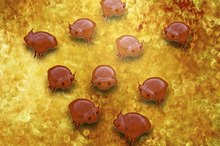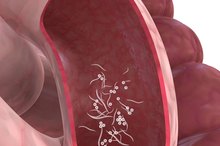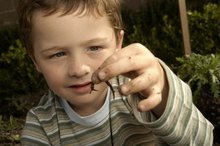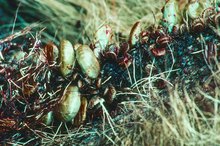Protozoan Diseases List
Protozoa are one-celled organisms that can cause diseases ranging in severity from mild to deadly. These organisms can be classified as parasitic or free-living. Parasitic protozoa are found in organisms such as ticks, flies and mosquitoes. Free-living protozoa are found in water that is contaminated with fecal matter and other wastes.
If you are experiencing serious medical symptoms, seek emergency treatment immediately.
Amoebiasis
Amoebiasis is a protozoan disease caused by Entamoeba histolytica, which secretes enzymes that dissolve the host's tissues. Amoebiasis infection is spread by contact with feces, which can occur if water or food are contaminated, or if someone has oral contact with fecal matter. This condition can occur without symptoms, but some of the common signs and symptoms of amoebiasis include bloody diarrhea and inflammation of the colon.
Giardiasis
Diseases That Raccoons Can Spread to Humans
Learn More
Giardiasis is caused by the parasite known as Giardia intestinalis. This parasite is found in fecal matter, so it can be contracted through oral contact with feces. This can occur if proper hand washing is not done after using the bathroom, changing a baby's diaper or cleaning bathroom fixtures. Drinking water from contaminated sources and accidentally swallowing contaminated swimming water can also cause giardiasis infection. The symptoms of giardiasis include:
- greasy stools
- upset stomach
- diarrhea
- nausea
- flatulence
- abdominal cramps
- Giardiasis is caused by the parasite known as Giardia intestinalis.
- This parasite is found in fecal matter, so it can be contracted through oral contact with feces.
African Sleeping Sickness
African sleeping sickness is caused by protozoa in the Trypanosoma genus. These organisms are carried by the tsetse fly and transmitted to humans via tsetse fly bites. According to the World Health Organization, Trypanosoma brucei gambiense causes more than 90 percent of African sleeping sickness cases 1. Trypanosoma brucei rhodesiense is responsible for less than 10 percent of reported cases of the disease.
- African sleeping sickness is caused by protozoa in the Trypanosoma genus.
- According to the World Health Organization, Trypanosoma brucei gambiense causes more than 90 percent of African sleeping sickness cases 1.
Leishmaniasis
Diseases From Pork That Pass to Humans
Learn More
Leishmaniasis is caused by the Leishmania parasite, which is found in southern Europe, the subtropics and the tropics. This disease is spread by the bites of sand flies that are infected with the parasite. Cutaneous leishmaniasis affects the skin, while visceral leishmaniasis affects the spleen, liver and other organs. Cutaneous leishmaniasis causes skin sores that can change in size and shape as the disease progresses. Visceral leishmaniasis symptoms include weight loss, fever, liver enlargement, spleen enlargement and abnormal blood counts.
- Leishmaniasis is caused by the Leishmania parasite, which is found in southern Europe, the subtropics and the tropics.
- Cutaneous leishmaniasis causes skin sores that can change in size and shape as the disease progresses.
Toxoplasmosis
Toxoplasmosis is caused by an organism known as Toxoplasma gondii, which the Mayo Clinic cites as one of the most common parasites in the world 2. While most people with this disease do not have any symptoms, serious complications can occur when toxoplasmosis develops in people with compromised immune systems 2. Infants born to mothers infected with the disease can also experience serious complications. Toxoplasmosis signs and symptoms are flu-like in nature and include:
- body aches
- headache
- fatigue
- fever
- swollen lymph nodes
- sore throat 2
Malaria
Malaria is spread by mosquitoes that are infected by the parasites Plasmodium falciparum, P. ovale, P. vivax and P. malariae. According to the Centers for Disease Control and Prevention, the Unites States has approximately 1,300 cases of malaria each year, most of which are related to travel to or immigration from South Asia and sub-Saharan Africa 3. Malaria signs and symptoms include shaking, headache, chills, fatigue and muscle aches.
Babesiosis
Babesiosis is caused by the Babesia parasite, which is carried by ticks. This disease can also be spread through blood transfusions if a donor has a Babesia infection that has not been diagnosed. Babesiosis caused by tick bites usually occurs in New England, New Jersey, New York, Minnesota and Wisconsin. This condition may not cause:
- any signs or symptoms
- but some common symptoms of babesiosis include fatigue
- nausea
- body aches
- headache
- loss of appetite
- chills
- fever
- sweats
This disease can be life-threatening in people who have weakened immune systems, serious health problems or spleens that do not function properly.
- Babesiosis is caused by the Babesia parasite, which is carried by ticks.
- This disease can also be spread through blood transfusions if a donor has a Babesia infection that has not been diagnosed.
Related Articles
References
- World Health Organization: African Trypanosomiasis
- Mayo Clinic: Toxoplasmosis
- World Health Organization. Trypanosomiasis, human African (sleeping sickness). Updated October 11, 2019.
- Andrews KT, Fisher G, Skinner-Adams TS. Drug repurposing and human parasitic protozoan diseases. Int J Parasitol Drugs Drug Resist. 2014;4(2):95–111. Published 2014 Mar 24. doi:10.1016/j.ijpddr.2014.02.002
- World Health Organization. Malaria. Updated March 27, 2019.
- De waal T. Advances in diagnosis of protozoan diseases. Vet Parasitol. 2012;189(1):65-74. doi:10.1016/j.vetpar.2012.03.033
- Centers of Disease Control and Prevention. Parasites - Toxoplasmosis (Toxoplasma infection) Diagnosis. Updated September 5, 2018.
- Centers for Disease Control and Prevention. Giardia Diagnosis & Detection. Updated July 21, 2015.
- Centers for Disease Control and Prevention. Parasites - African Trypanosomiasis (also known as Sleeping Sickness). Updated August 29, 2012.
Writer Bio
Leigh Zaykoski has been a writer and editor for six years. Her medical writing has appeared on dozens of websites. Zaykoski attended the University of Pittsburgh and Keystone College, studying microbiology and business administration. She is currently pursuing a medical writing certification.









